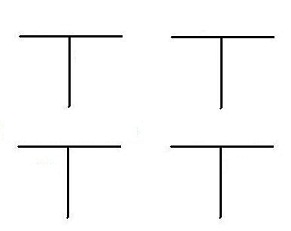
Virtual Business Analyst
AnyStandard.net
STAN'S
Accounts Payable

GOALS:
The accounts payable section of an accounting department, records
goods and services that are received and the payments it owes, such
as inventory from a supplier or other expenses. Bills from any source
whether it is request from our supplier or employee will be submitted
to Accounts Payable. The department records each accounts payable
as a liability.
SUPPORTS:
The accounts payable section of an accounting department, records
goods and services that are received and the payments it owes, such
as inventory from a supplier or other expenses. Bills from any source
whether it is request from our supplier or employee will be submitted
to Accounts Payable. The department records each accounts payable
as a liability.
SUPPORTS:
- A/R
- Employees
- Finance
- Purchasing
COMMUNICATES with:
- Bank Processors
- H/R
- Information Technology
- Mail Room
- Treasury
Contact : Mary


Support
Supplier
Supplier
Support
Employee
Employee
Support
Finance
Finance
Support
Purchasing
Purchasing
Support
Receiving
Receiving

Bank
Processor
Processor
Support
Shipping
Shipping


| A/P |
| A/P |
Purchases
Merchandise Inventory
Perpetual inventory system
Periodic inventory system
For instance: If you purchased 1,000 units of merchandise at $20 per unit.
With a periodic inventory system, a purchase during the accounting period is
recorded as a credit in the A/P account for $20,000 and a Debit for $20,000
With a perpetual inventory system, a change is made in the merchandise
inventory account for $4,000 fir the sale of 200 units.
Under periodic inventory system, the following journal entry is recorded at
the end of accounting period.
With a periodic inventory system, a purchase during the accounting period is
recorded as a credit in the A/P account for $20,000 and a Debit for $20,000
With a perpetual inventory system, a change is made in the merchandise
inventory account for $4,000 fir the sale of 200 units.
Under periodic inventory system, the following journal entry is recorded at
the end of accounting period.
Perpetual inventory system updates inventory accounts after each purchase
or sale.
Inventory subsidiary ledger is updated after each transaction.
Inventory quantities are updated continuously.
or sale.
Inventory subsidiary ledger is updated after each transaction.
Inventory quantities are updated continuously.
Perpetual inventory system
Periodic inventory system
Periodic inventory system records inventory purchase or sale in the A/P account.
A/P is updated continuously, however, All Inventory accounts are updated on a periodic
basis, at the end of each accounting period.
Inventory subsidiary ledger is not updated after each purchase or sale of inventory.
Inventory quantities are not updated continuously.
Inventory quantities are updated on a periodic basis.
A/P is updated continuously, however, All Inventory accounts are updated on a periodic
basis, at the end of each accounting period.
Inventory subsidiary ledger is not updated after each purchase or sale of inventory.
Inventory quantities are not updated continuously.
Inventory quantities are updated on a periodic basis.

| Purchases |
Cost of Goods Sold
| Purchases |
Merchandise inventory
The following journal entry is
recorded at the end of
accounting period.
recorded at the end of
accounting period.
Quantity of merchandise inventory for Accounts
Payable
1,000 units purchased - 200 units sold = 800 units
left
Cost of goods sold
Total purchases - Ending balance of
merchandise inventory
1,000 units x $20 per unit cost - 800 units x$20
per unit cost
$20,000 - $16,000 = $4,000
Quantity of merchandise inventory
1,000 units purchased - 200 units sold = 800 units
left
Cost of merchandise inventory for Accounts
Payable
800 units x $20 per unit cost = $16,000
Ending Inventory and Cost of goods sold for
Accounts Payable
Ending inventory
Beginning inventory + Purchases during the
period
- Cost of goods sold
$0 + $20,000 - $4000 = $16,000
Cost of goods sold for Accounts Payable
Beginning inventory + Purchases during the
period
- Ending inventory
$0 + $20,000 - $16,000 = $4,000
Hypothetically
Purchased 1,000 units of merchandise at $20 per unit.
Purchased 1,000 units of merchandise at $20 per unit.
- Pay
Expenses
- Invoices
- Payments
- Credits
- Ledger Updates
- Adjustments
- Mailings
- Bills
- Payments
- Inventory
Receipts
- Returns

- Maintain Supplier Data
- Maintain Employee Data
- Financial transactions
- P/O Order Maintenance
- Payments
- Maintain Exchange Rates
- Bank Remittance
- A/P Statements
- Check Reconciliation
- Purchase Price Variance
- Reconcile Expenses
- Review Accruals
| Performing tasks |

| Accounts Payable Support |
| $20,000 |
| $20,000 |
| $20,000 |
| $16,000 |
| $16,000 |
| $4,000 |
| $4,000 |
H/R
- Employee
information
| Support A/R |
- Cash Credit
Return - Cash Inventory
Credit


Mail Room
- Mailings
- Bills
I.T.
- Application
Issues and
Changes
Receiving
- Products
Received
- Authorize
Payment - Currencies
- Trade
Treasury
Accounts Payable Files
O*Net POSITIONS

O*Net Job Openings
On the Web
On the Web

